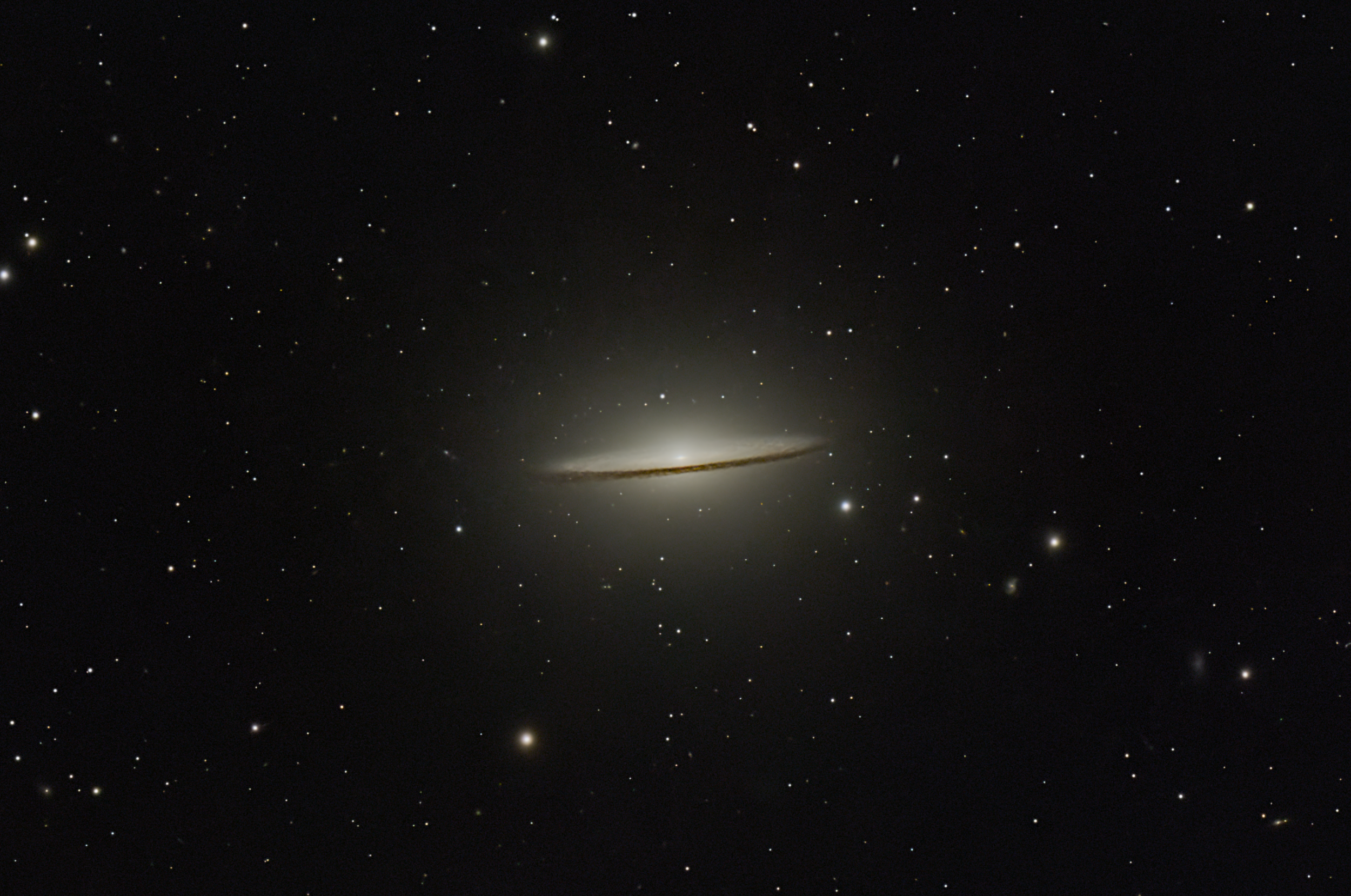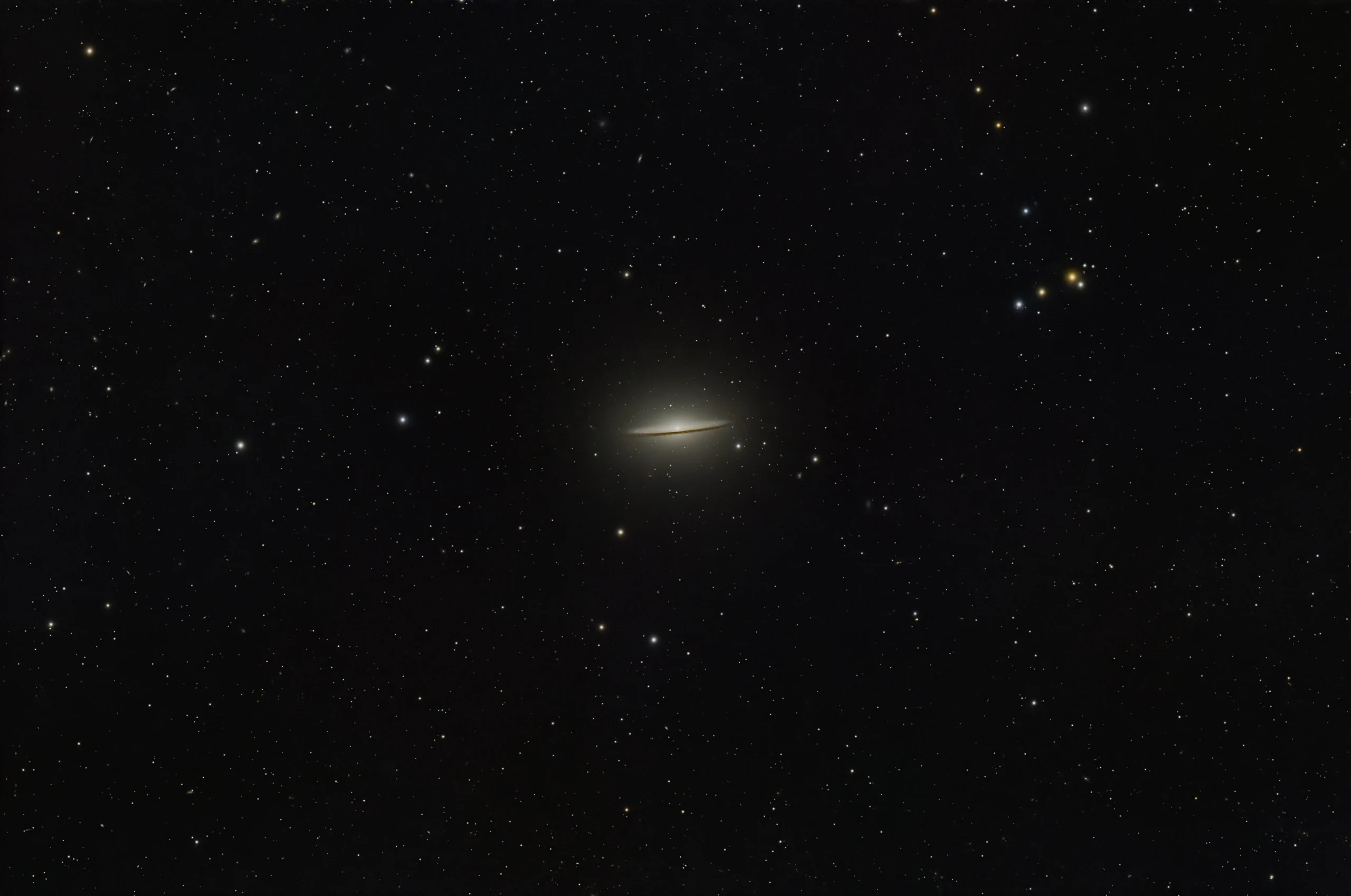

Wikipedia:
The Sombrero Galaxy (also known as Messier Object 104, M104[4] or NGC 4594) is a peculiar galaxy of unclear classification[5] in the constellation borders of Virgo and Corvus, being about 9.55 megaparsecs (31.1 million light-years)[2] from the Milky Way galaxy. It is a member of the Virgo II Groups, a series of galaxies and galaxy clusters strung out from the southern edge of the Virgo Supercluster.[6] It has an isophotal diameter of approximately 29.09 to 32.32 kiloparsecs (94,900 to 105,000 light-years),[1] making it slightly bigger in size than the Milky Way.
It has a bright nucleus, an unusually large central bulge, and a prominent dust lane in its outer disk, which from Earth is viewed almost edge-on. The dark dust lane and the bulge give it the appearance of a sombrero hat (thus the name). Astronomers initially thought the halo was small and light, indicative of a spiral galaxy; but the Spitzer Space Telescope found that the halo was significantly larger and more massive than previously thought, indicative of a giant elliptical galaxy.[7]
Acquisition Details:
| Telescope | Takahashi TOA-130 |
| Optics | Takahashi TOA-645 Flattener |
| Filter | None |
| Camera | ASI2600MC Pro OSC |
| Integration Time | 3.8 hours |
| Subframes | 77 x 180 seconds |
| Date | April 19, 2025 |
| Location | Carlsbad, California |